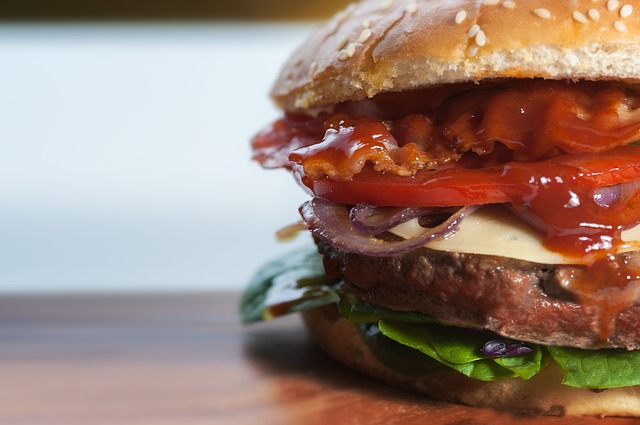As fast-food networks are progressively growing, researchers recently determined the link between fast-food accessibility and heart attack.
Cardiovascular disease remains one of the leading causes of death worldwide, with numerous studies linking poor dietary habits, with an increased risk of heart attack.
The 2016 European Guidelines on cardiovascular disease prevention in clinical practice, which was published in the European Heart Journal, recommended controlling the number of fast-food restaurants in the community.
These guidelines reported a strong link between fast-food and heart attack, independent of other risk factors.
However, the role of the availability of fast-food restaurants and access to it was not clearly established.
Researchers from the University of Newcastle, Australia studied the link between fast food accessibility and heart attack. The results were presented at the 67th Annual Scientific Meeting of the Cardiac Society of Australia and New Zealand (CSANZ).
The study included 3,070 patients across rural and metropolitan areas in the Hunter Region of New South Wales who were hospitalized due to a heart attack in the period between 2011 and 2013.
Factors including age, obesity, high blood lipids, high blood pressure, smoking status, and diabetes were all accounted for.
As the main goal of the study was to assess the importance of the food environment, researchers included a patient’s postal code from the database to analyze fast-food restaurant distribution.
Based on the population choice from the survey of 2018, researchers determined that fast food accounted for the ten most popular quick food retailers among all food services in Australia.
The researchers counted the total number of fast-food services in each area and compared areas to each other to find out the link between fast-food accessibility and heart attack.
The study found that heart attacks occurred more often in areas with a higher density of fast-food restaurants.
In addition, researchers found that every year for each additional fast-food retailer there were four additional heart attacks per 100 000 people.
Although the study shows the link between fast-food accessibility and heart attack, researchers consider that people should be responsible for their eating habits.
Also, actions on a population level are required to overcome the heart disease problem, and local areas should provide good access to stores with healthy food.
Written by Anna Otvodenko
References:
Piepoli, M., Hoes, A., Agewall, S., Albus, C., Brotons, C., Catapano, A., Cooney, M., Corrà, U., Cosyns, B., Deaton, C., Graham, I., Hall, M., Hobbs, F., Løchen, M., Löllgen, H., Marques-Vidal, P., Perk, J., Prescott, E., Redon, J., Richter, D., Sattar, N., Smulders, Y., Tiberi, M., van der Worp, H., van Dis, I. and Verschuren, W. (2016). 2016 European Guidelines on cardiovascular disease prevention in clinical practice. European Heart Journal, 37(29), pp.2315-2381.
Conference Abstract: “Impact of Fast food Outlet Density on Incidence of Acute Myocardial Infarction in the Hunter Region” is being presented during the “Clinical/Surgery Mini Oral Session” on Saturday 10 August at 12:20 to 13:20 ACST.
EurekAlert!. (2019). Fast food availability linked with more heart attacks. [online] Available at: https://www.eurekalert.org/pub_releases/2019-08/esoc-ffa081119.php [Accessed 14 Aug. 2019].
Image by Pexels from Pixabay



